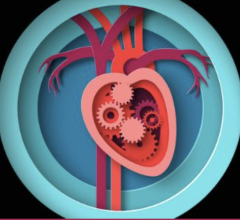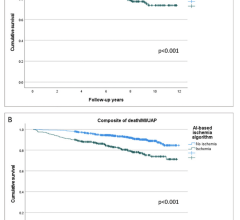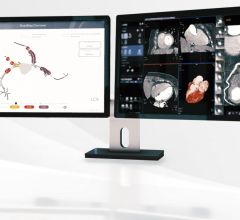
March 29, 2022 – Cardiac computed tomography (CCT) is an accurate, noninvasive diagnostic test for obstructive coronary artery disease (CAD) according to an analysis recently published in The New England Journal of Medicine (NEJM), and poses less risk than the current standard diagnostic test for intermediate-risk patients of invasive coronary angiography (ICA), or cardiac catheterization. CT patients experienced significantly less major procedure-related complications over 3.5 years of follow-up.
The DISCHARGE randomized trial – made up of a 31-institution consortium and led by Prof. Dr. Marc Dewey, head of the Department of Radiology on Campus Charité Mitte – compared the effectiveness of CCT versus ICA as the initial diagnostic imaging strategy for evaluating stable patients with chest pain.
Eric Williamson, MD, MSCCT, president of the Society of Cardiovascular Computed Tomography (SCCT) states: “This study reaffirms that coronary CT angiography should be the first-line test for patients presenting with chest pain. It is safe, effective and quick. A CT first strategy allows physicians to provide relevant findings without the need for an invasive procedure. This is especially important for people who do not have obstructive CAD.”
The more than 3,500 patients enrolled in the trial were randomly assigned CT or ICA as a diagnostic imaging technique after reporting chest pain. Clinical outcomes were similar for both test groups in the study, with 2.1% of patients assigned to CCT and 3% in the ICA group experiencing primary outcomes in major adverse cardiovascular events (MACE).
The primary outcome was a composite of cardiovascular death, non-fatal myocardial infarction and nonfatal stroke over 3.5 years. Key secondary outcomes were major procedure-related complications and self-reported angina. Although MACE risks were similar in both groups, the frequency for major procedure-related complications was lower for patients in the CT group (.5%) than for patients who underwent ICA (1.9%).
CAD is associated with a reduced blood flow in the coronary arteries that supply the heart with oxygen, which can lead to symptoms of chest pain and shortness of breath. Because nearly 60% of patients who are referred for ICA do not have obstructive CAD, this trial proves CT is a viable low-risk alternative to the invasive procedure.
For more information: https://www.nejm.org/


 July 23, 2024
July 23, 2024 









